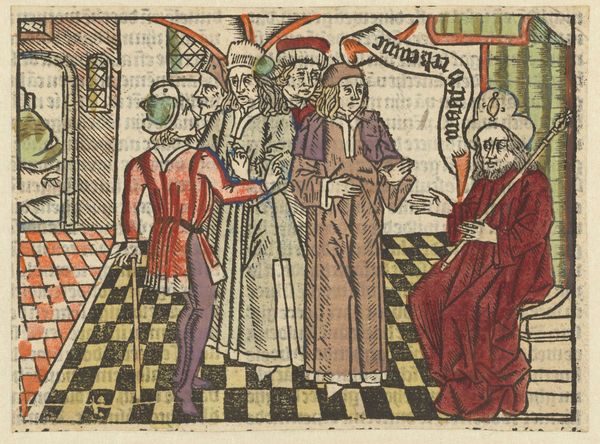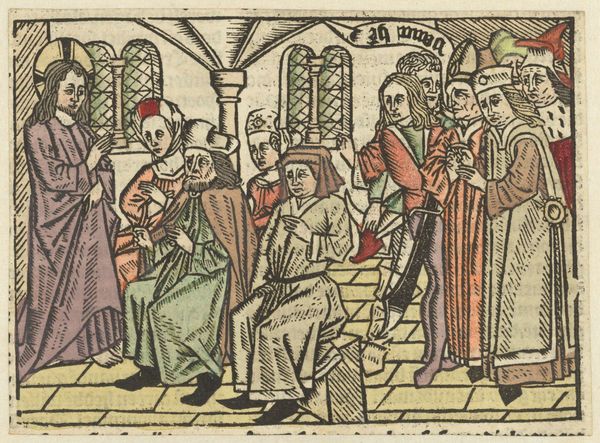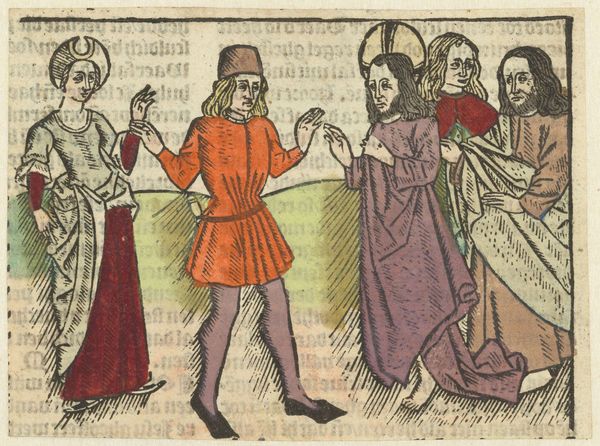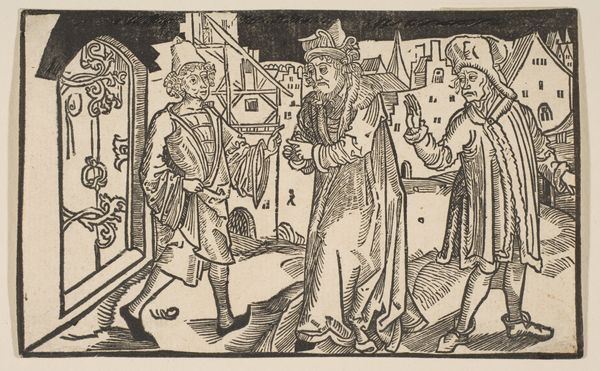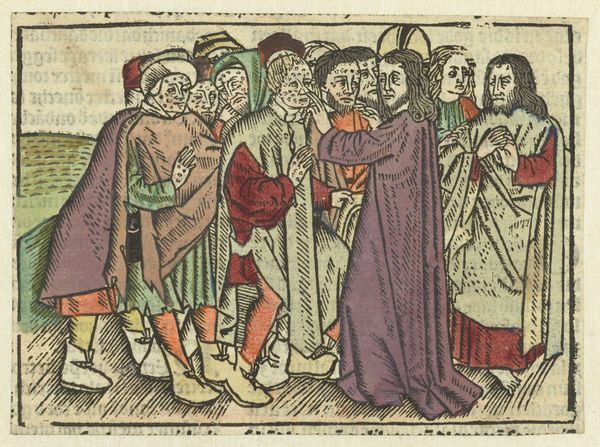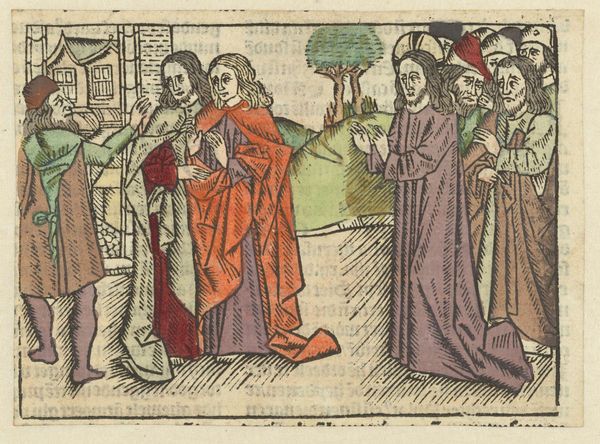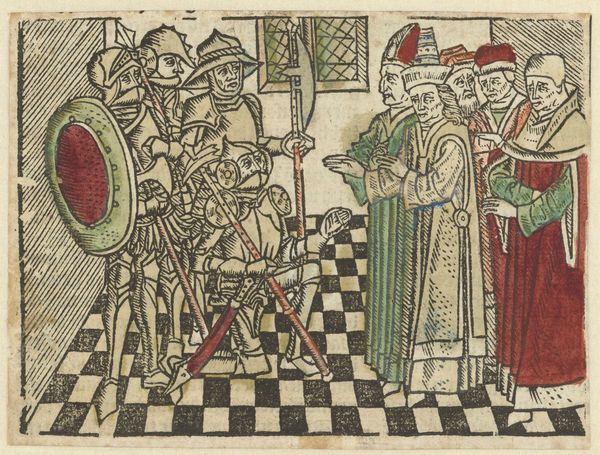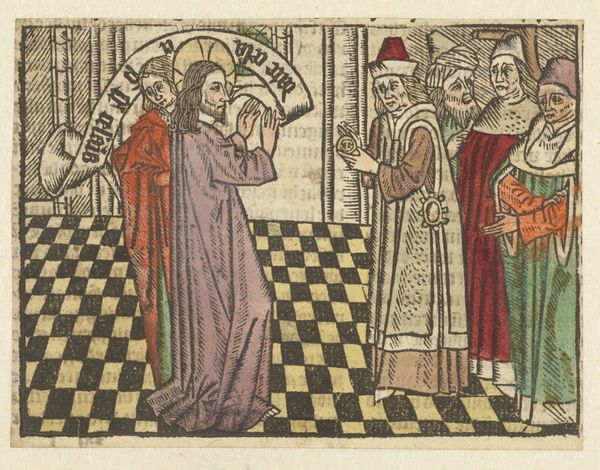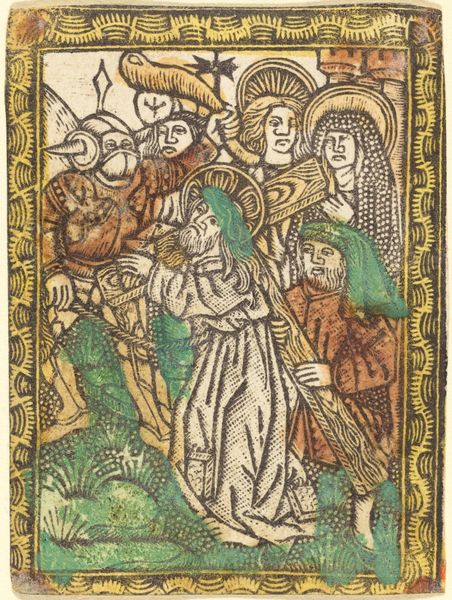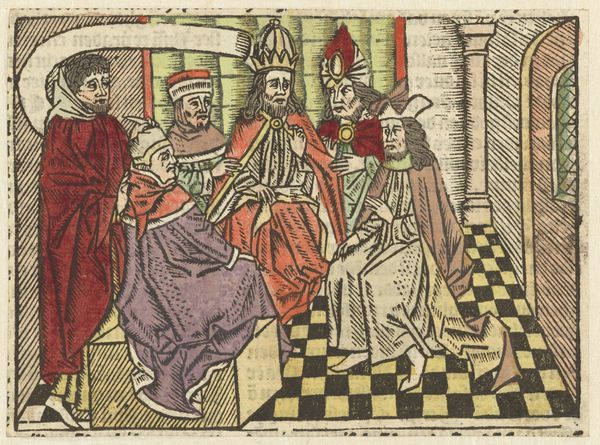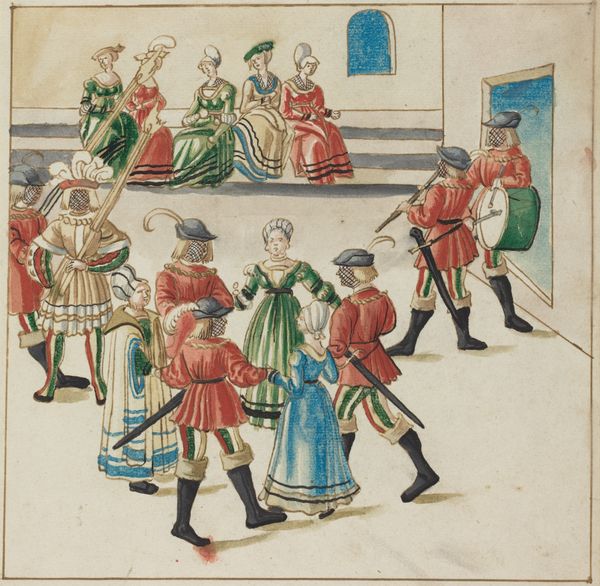
print, woodcut
#
medieval
#
narrative-art
# print
#
figuration
#
coloured pencil
#
woodcut
#
genre-painting
#
northern-renaissance
Dimensions: height 95 mm, width 130 mm
Copyright: Rijks Museum: Open Domain
Curator: Here we have "Parable of the Workers in the Vineyard," a woodcut with some areas of color, created by the Master of Antwerp around 1485-1491. Editor: It strikes me as visually arresting, with its bold lines and flattened perspective giving it a medieval feel despite the dating to the Northern Renaissance. There’s a somewhat chaotic energy. Curator: Precisely, the composition is busy! This visual noise reinforces the narrative nature of the image, which retells the biblical parable of laborers hired at different times of day all receiving the same wage. The figures working in the vineyard – their actions carry symbolic weight – each contributing to the collective narrative. Editor: And what’s intriguing is how that biblical narrative can be viewed through the lens of social justice. Are we meant to interpret the vineyard owner’s actions as fair or unjust? The fact that the labourers hired later are rewarded equally with the earlier ones speaks to concepts of equality. It subtly critiques hierarchical labor practices of the time. Curator: It's worth considering, though, the historical context. In late medieval Europe, rigid social structures were seen as part of the natural order. The woodcut, as a popular medium, had to function on multiple levels. While there may be an implicit social commentary, there would also be a readily accessible moral about divine generosity. It reinforced, perhaps, an individual's place in the medieval social hierarchy rather than questioning it. Editor: I wonder. Surely such depictions also opened possibilities to examine inequalities prevalent during this era, initiating discourse around fairness. Visual representations like this had a direct impact in shaping a common conscience. The master of Antwerp was subtly planting seeds to provoke reflection. Curator: Perhaps. The lasting impact is open to interpretation. However, I continue to be intrigued by the continuity of visual representation that informs our emotional engagement to a narrative from biblical history that to this day finds continued relevance in social issues of equity and fairness. Editor: Agreed. Whether consciously intended or not, its enduring power speaks volumes about its capacity to ignite debate about labor and equity. These discussions remain poignant in the present times.
Comments
No comments
Be the first to comment and join the conversation on the ultimate creative platform.
